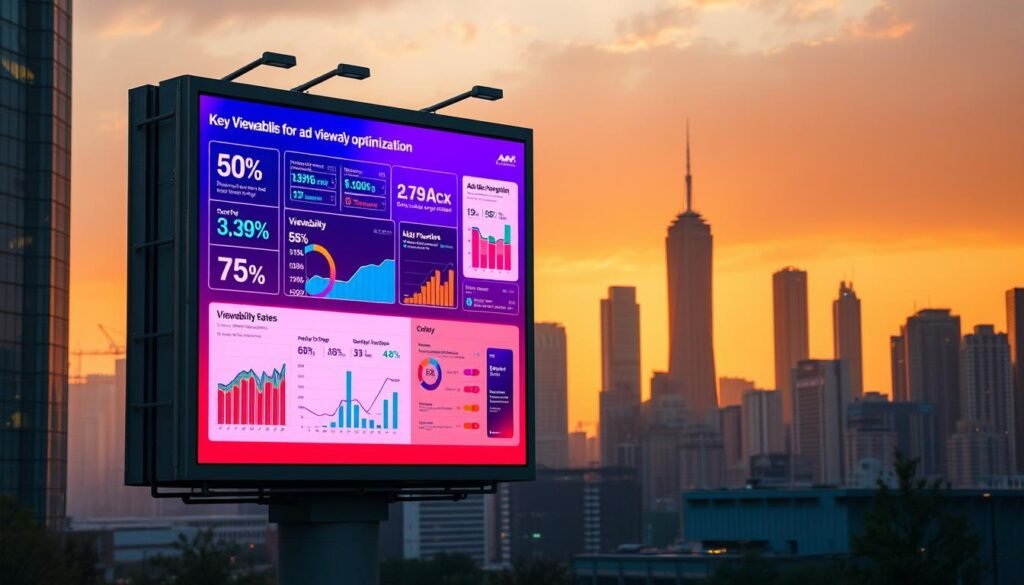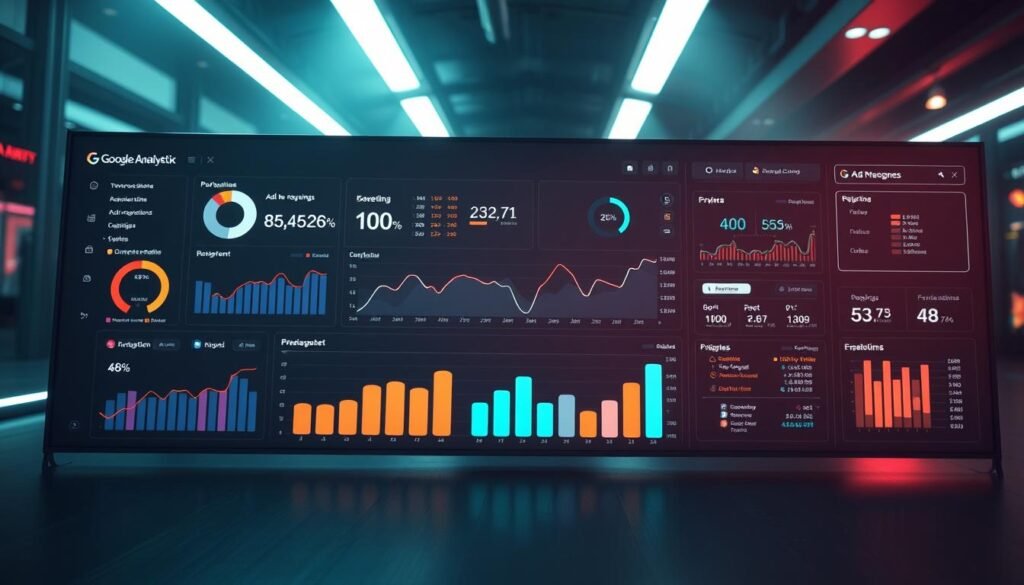Digital publishers face many challenges to increase their online ad earnings. Google Ad Exchange (AdX) is a strong tool for those wanting to make the most of their websites. It uses advanced programmatic ads to change how you earn from ads.
Google AdX gives publishers a top-notch marketplace for real-time bidding. This lets them control their ad space better. With smart strategies, websites can grow their ad revenue a lot.
The world of digital ads needs smart solutions, and Google AdX provides them. It uses smart auctions and high-demand ads to help publishers earn more. This is something traditional ad networks can’t offer.
Key Takeaways
- Real-time bidding increases ad revenue
- Advanced targeting boosts earnings
- Programmatic strategies improve inventory control
- Premium demand partnerships increase website earnings
- Sophisticated auctions maximize profits
Understanding Google AdX Marketplace Dynamics

Google ad exchange is a complex digital ad world. It changes how publishers and advertisers work together. Unlike old ad networks, this platform is a real-time market where ads are bought and sold fast.
The heart of Google AdX is its fast auction system. Publishers can reach many buyers at once, helping them make more money. Advertisers quickly bid on ad spots, making prices better.
Using Google AdX for ads brings clear benefits. Publishers can choose who sees their ads and set prices. This means better ads and more money for them.
| Feature | Google AdX Advantage |
|---|---|
| Auction Type | Real-time bidding with multiple demand sources |
| Publisher Control | Advanced targeting and pricing management |
| Revenue Potentail | Increased earnings through competitive bidding |
Google ad exchange helps digital publishers get better ads. Its smart algorithms make sure every ad is worth its value.
Setting Up Your Google AdX Account for Success

Starting a Google AdX account needs careful planning and setup. Publishers aiming for success must know the key steps. This includes meeting certain requirements and going through the application process with care.
There are two ways to join Google AdX: manage it yourself or work with a certified partner. Managing it yourself requires technical skills and a lot of time. You need to show you have enough traffic and keep your site high-quality.
| Account Setup Option | Key Characteristics | Recommended For |
|---|---|---|
| Direct Google AdX Management | Full control, complex setup | Large publishers with technical teams |
| Google AdX Partner Management | Simplified process, expert support | Small to medium publishers |
Important steps include setting up ad units, pricing rules, and inventory settings. Publishers must configure their account well to make more money and keep users happy.
To succeed with Google AdX, keep an eye on your performance and make changes. Check your metrics often, tweak your strategies, and try new ad tech solutions. This will help you grow your revenue over time.
Maximizing Revenue Through Private Auctions

Private auctions are a key strategy for publishers to boost their ad revenue in Google AdX. These special auctions let publishers pick a few top advertisers to bid on the best ad spots. This makes the market more controlled and profitable.
Real-time bidding makes private auctions even better by allowing quick, open bidding among approved advertisers. Publishers can set minimum bid prices, ensuring only the best bids win. This keeps ad quality high and boosts earnings.
| Private Auction Feature | Revenue Impact |
|---|---|
| Selective Advertiser Invitations | Increased bid competition |
| Custom Floor Pricing | Higher per-impression revenue |
| Exclusive Ad Inventory | Premium advertiser attraction |
To make the most of private auctions, publishers need to pick their advertisers wisely. Choose brands that fit your audience and content well. This strategy can increase bid prices and build lasting partnerships with top advertisers.
Keeping private auctions successful means always looking to improve. Watch how bids are doing, tweak your minimum prices, and update your list of invited advertisers. This keeps your ad space competitive and profitable.
Leveraging Header Bidding Technology
Header bidding has changed digital advertising. It lets publishers get more money from ads. This method makes it easier for different ad exchanges to compete for space on websites.
Its main strength is in increasing competition. Publishers can connect with many ad networks and exchanges before their main ad server. This way, they get the best bid for their space.
Yield management gets better with header bidding. There are two main ways to use it: client-side and server-side. Client-side runs in the browser, while server-side uses external servers. This makes websites load faster and improves user experience.
| Header Bidding Method | Key Advantages | Potential Challenges |
|---|---|---|
| Client-Side | Direct browser integration | Potential page latency |
| Server-Side | Faster performance | Complex implementation |
Using header bidding can boost ad revenue by 30% or more. Publishers need to think about their tech and audience to pick the right method for them.
Implementing Strategic Price Floor Management

Price floor management is key to making more money from ads on Google AdX. Publishers can boost their earnings by using smart pricing methods. These methods help make the most of advertising opportunities.
Dynamic pricing is at the forefront of ad tech. AI tools help adjust prices based on what’s happening right now. They look at things like how ads are doing, where they are, and when it is.
Good price floor management fights bid shading. It keeps prices fair by watching and changing them as needed. This can raise earnings by up to 5% thanks to smart pricing.
| Pricing Strategy | Potential Revenue Impact |
|---|---|
| Static Price Floors | 1-2% Revenue Increase |
| Dynamic AI-Powered Floors | 4-6% Revenue Increase |
Publishers wanting to make more from ads should use advanced tools. These tools adjust prices in real-time. The fast-paced world of ad tech needs quick, smart pricing to get the most out of digital ads.
Optimizing Ad Viewability Metrics

Ad viewability is key to making money from digital ads. Publishers know that ads must be seen by users to earn. An ad is considered seen if half of it is visible for at least a second.
Using smart ad tech can really help ads get seen more. Lazy loading makes ads appear only when scrolled to, saving money and boosting earnings. Sticky ads stay visible as users scroll, improving views and engagement.
Where ads are placed matters a lot for getting seen. Ads near popular content get more views. Publishers should aim for top placements and make ads work well on all devices.
Tools like Google AdX help track ad performance. They give detailed insights for better ad placement and design. This way, publishers can improve their ads’ visibility.
It’s important to balance ads with user experience. Too many ads can annoy users, hurting site visits. To succeed, ads must be both profitable and user-friendly.
Advanced Targeting Capabilities in Google AdX

Programmatic advertising changes digital marketing with smart targeting. Google AdX gives publishers tools to segment audiences well. This boosts ad value a lot.
Demographic targeting lets publishers sort audiences by age, gender, income, and location. This helps platforms find the best ads. Behavioral targeting looks at browsing patterns and interests.
Contextual targeting is also key. Publishers match ads with webpage content for better user experiences. This makes ads more relevant and engaging.
Collecting first-party data is vital for strong audience segments. Publishers use user info and browsing data to create valuable profiles. They must manage data carefully due to privacy rules.
Advanced targeting helps publishers make more money. Google AdX gives publishers detailed audience insights. This lets them improve their digital ads and attract top advertisers.
Exploring Premium Ad Formats

Publishers aiming to boost their digital ad earnings should explore premium ad formats. Google AdX offers a wide range of ad tech solutions. These solutions change how ads are made and shown.
Interactive ad units are a big leap forward for publishers. They help increase engagement and earnings. These ads are interactive, making them stand out.
Rich media ads grab attention with their dynamic content. They use video, animation, and more. This makes ads more engaging and can lead to more clicks and money.
Native ads blend in with website content, making them less intrusive. They look like the site’s content, which leads to better engagement. This is a key part of ad tech solutions.
Interactive ad units have a lot of promise for publishers. They can raise revenue by over 3%. They engage users through polls and quizzes, turning passive viewing into active participation.
Using these premium ad formats well is key. Publishers need to balance making money with keeping users happy. Google AdX helps with this, making sure ads don’t slow down websites.
Utilizing Data Analytics for Revenue Growth

Data analytics is key for publishers using Google AdX to boost ad revenue. Advanced reporting tools give deep insights into performance. This helps make smart decisions for growth.
Yield management gets better with detailed data analysis. Metrics like CPM, fill rate, and revenue per session are very important. They show how well ads are doing and where to improve.
Good data analysis means always watching and trying new things. A/B testing different ad setups helps find the best ways to show ads. This way, publishers can keep getting better at making more money from ads.
| Metric | Performance Impact |
|---|---|
| CPM | Indicates ad value and pricing effectiveness |
| Fill Rate | Measures inventory utilization |
| Revenue per Session | Tracks overall monetization efficiency |
Publishers should use data to guide their strategies. Looking at reports often helps spot trends and improve ad spots. This way, they can make the most of Google AdX.
Implementing Mobile-First Strategies

Programmatic advertising has changed how publishers make money from mobile ads. The mobile world needs special ad tech solutions. These solutions help publishers make more money and give users great experiences. Google AdX has tools to help publishers use mobile traffic well.
Now, more than 60% of digital traffic comes from mobile users. Publishers must make their ad strategies better to reach this big audience. Interstitial and rewarded video ads are great for getting people involved and making money. They fit well into mobile screens, making ads less annoying.
Here are some important tips for mobile optimization:
- Make ads load faster on mobile
- Improve how well ads are seen on mobile
- Use responsive design
- Create ads just for mobile
Today’s ad tech lets publishers target mobile users better. They can use data to show ads that really speak to mobile users. Snigel’s AdStream tech shows how mobile video ads can increase revenue by up to 23%.
To do well in mobile programmatic ads, publishers need to keep trying new things. They should watch how their ads do, change their targeting, and try out different ad types. This helps them get the most out of their mobile ads.
Managing Ad Quality and User Experience
Getting the most from ads while keeping users happy is key. Google AdX gives publishers tools to manage ad quality well. This helps create ads that don’t bother users.
Publishers can use Google AdX’s advanced filters to block bad ads. These tools let them control what ads appear. This way, ads match the site’s standards and what users expect.
Where ads are placed is also important. Using Google AdX, publishers can set limits on ad frequency. This keeps ads from getting too annoying while keeping earnings up. Google AdX has detailed settings for a smooth ad experience.
Here are some ways to manage ad quality:
- Implementing content category filters
- Utilizing frequency capping techniques
- Monitoring engagement metrics
- Analyzing user experience impact
Putting users first has long-term benefits. It leads to happier users, better engagement, and more trust. This is good for growing your digital ad business over time.
Programmatic Direct Deals Optimization
Programmatic direct deals are a strong strategy for publishers on Google ad exchange. They help maximize the value of premium ad spaces. Publishers can offer specific ad spots directly to chosen advertisers before they go to open auctions.
Preferred deals offer a chance for publishers to earn more. They can set fixed prices and ensure a certain number of ad views with top advertisers. This makes their income more stable than traditional ad methods.
| Deal Type | Key Benefits | Average CPM Increase |
|---|---|---|
| Preferred Deals | First-look opportunity | 20-40% |
| Programmatic Guaranteed | Fixed inventory commitment | 30-50% |
To optimize direct deals, publishers need to pick the right partners and understand their audience well. They should highlight their most valuable audience segments. This attracts high-quality advertisers who want to target their audience precisely.
Successful strategies include gathering deep audience insights and keeping open communication with advertisers. Publishers should also keep refining their targeting to make their ad spaces more appealing.
Leveraging Seasonal Advertising Opportunities
Seasonal advertising is a great chance for publishers to boost their ad revenue. Digital marketers know that some times of the year are better for ads. These times have more demand and bigger budgets.
Real-time bidding platforms like Google AdX help publishers make the most of these trends. When it’s holiday shopping or big sports events, advertisers spend a lot more.
To do well in seasonal ads, publishers need to look at past data. They should check how people interacted with ads and how much money they made before. This helps them plan better and target ads more effectively.
| Season | Typical Ad Demand | Revenue Potencial |
|---|---|---|
| Holiday Season | High | Up to 50% increase |
| Back-to-School | Medium-High | 30-40% increase |
| Summer Events | Medium | 25-35% increase |
Good strategies include changing ad formats and using more targeted ads. Publishers can also create special ad packages for big advertisers. By getting ready for seasonal changes, publishers can really increase their ad revenue.
Integration with Multiple Demand Partners
Expanding your programmatic advertising strategy beyond Google AdX opens up exciting opportunities. Publishers can now maximize their revenue by working with multiple demand-side platforms. This creates a competitive marketplace that drives higher ad yields and improves overall monetization.
Top demand partners like Magnite, Amazon, OpenX, and Index Exchange can significantly enhance your ad inventory’s value. These supply-side platforms (SSPs) bring unique demand sources that complement Google AdX. This creates a robust programmatic advertising ecosystem that increases fill rates and potentially boosts CPMs.
| Demand Partner | Key Strengths | Performance Impact |
|---|---|---|
| Magnite | Premium Video Demand | Higher Video CPMs |
| Amazon | E-commerce Targeting | Improved Retail Ads |
| OpenX | Global Ad Marketplace | Wider Reach |
Selecting the right demand partners requires careful evaluation. Look at technical compatibility, fill rates, and revenue uplift. Publishers should use advanced yield management tools to optimize performance across multiple platforms. This ensures seamless integration and maximum ad revenue.
Implementing a strategic approach to demand-side platform integration can transform your programmatic advertising strategy. It creates a more competitive and lucrative advertising environment.
Conclusion
Digital advertising is changing fast, with Google AdX leading the way for publishers to boost their ad earnings. This article has shown how programmatic ads can change how we make money online.
Publishers who get to know Google AdX well can find big money-making opportunities. They need to use new tech, like header bidding, and smart pricing to get the most out of their ads. This way, they can make the most of their digital ad space.
The future of online ads is bright, with new tech and data-driven methods changing the game. Publishers need to keep learning and using new ideas to stay ahead in the fast world of digital ads.
By using Google AdX’s full range of tools and always looking to improve, digital publishers can build strong, lasting ways to make money. The secret is to keep learning, use smart strategies, and focus on giving great ad experiences.
